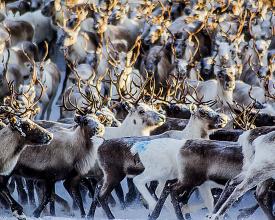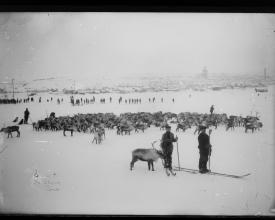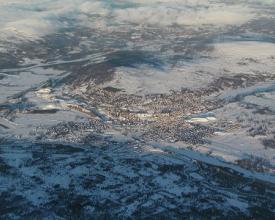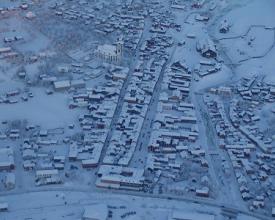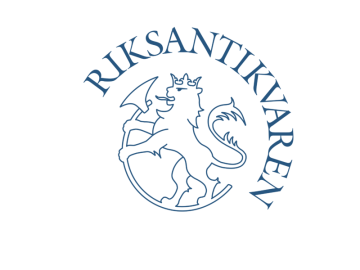
Integrating Sámi culture in the narrative of Røros mining town and the Circumference World Heritage, Norway
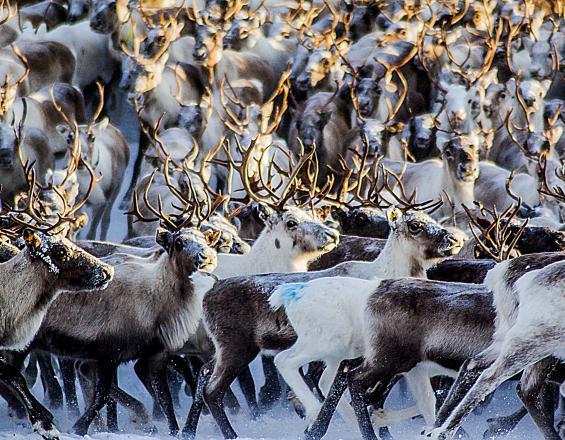
Røros Mining Town was inscribed in the World Heritage List under criteria (iii), (iv) and (v) in 1980. In 2010, the World Heritage area was extended to include the mining areas and the agricultural landscapes around Røros Mining Town, the Femundshytta melter and the “winter-route”. The area called the Circumference, granted to the mining enterprise by the Danish-Norwegian Crown in 1646, was added as a buffer zone: 2 national parks, Femundsmarka and Forollhogna, and parts of three Sámi reindeer husbandry districts are located within. Because of the lack of written and tangible sources of Sámi practices, the recognition of Sámi environmental knowledge and customary landscape management strategies have been limited in the World Heritage site narrative. Since the extension, a process has started at the management level to include Sámi culture into the interpretation of the site, with a focal point on the Røros museum, which also functions as Røros and the Circumference World Heritage centre.
Context
Challenges addressed
The central narrative of Røros and the Circumference as a World Heritage site is based on its history as a mining town that spans over 333 years (1644-1977) and the preserved traditional wooden architectural structures. However, Sámi reindeering has been a practice that outdates the copper works in the area. The Sámi understanding and historical relationship with the environment in Røros and the Circumference is not acknowledged in this official narrative, having impacts on the land rights of Sámi communities as well as the continuity of their cultural practices in relation to the natural environment.
Location
Process
Summary of the process
The process of integrating Sámi culture in the narrative of Røros mining town and the Circumference is embedded in a much larger process for the recognition of Sámi Indigenous Peoples rights. Røros, as a World Heritage (WH) place, calls public attention and represents an important case. Some significant steps in this ongoing process are presented here, showing both approaches and results towards Sámi heritage values recognition. The inclusion of an Indigenous people’s representative at the World Heritage Management Board (BB1) allowed for Sámi people to have a voice in decision-making over their territories located within the WH property. In parallel, the integration of Indigenous people's perspectives in the interpretation of Røros (BB2) was possible with the establishment of a Sámi researcher position at the Røros Museum which also functions as a WH centre. Furthermore, the granting of Sámi management area for language and culture status to the municipality of Røros enable the use of Sámi language in the signage of the WH property (BB4). A space for dialogue about the inclusion of Sámi values was created in the elaboration of the new management plan (BB3), reinforcing the idea about their inclusion in the WH narrative in the future.
Building Blocks
Indigenous people’s representative at the World Heritage Management Board
The World Heritage Management Board was established in 2012 and is composed of 8 members representing the main stakeholder groups in the World Heritage property: 5 mayors of the 5 municipalities - Røros, Tolga, Holtålen, Engerdal and Os-, 1 representative for each of the 2 counties - Trøndelag and Innlandet (regional level)- and 1 representative of the Sámi Parliament. The chair holds the role for 2 years and can be re-elected. The World Heritage coordinator acts as the Secretary of the board. Besides, there are 6 observers: the Director of Destination Røros, the Director of the Røros museum, the Director of Nord-Østerdal Museum (3 municipalities), the Director of Røros Municipality, the Cultural Heritage manager of Røros and the site manager of the Femundsmarka National Park who represents both national parks and the governors of the 2 counties. The board has regular meetings (4-5 times a year) and excursions where they process cases proposed by the coordinator, by the members themselves and by other stakeholders. The management plan, budget, new proposals to strengthen the values in the site, national and international collaboration and hearings of different suggestions from the directorates and departments are discussed. The decisions are taken by consensus.
Enabling factors
The Femundsmarka National Park, located within the Circumference area, counted with a representative of the Sámi Parliament in their own board. This was a model for the World Heritage Management Board. Besides, in 2018, Røros municipality became a management area for Sami language, which also reinforces the importance of the representation of Sámi people in the decision-making processes of the World Heritage site.
Lesson learned
1) The selection of the Sámi representative is done by the Sámi Parliament. This is important to strengthen the authority and the links to the parliament.
2) The participation of a Sámi representative in the board has influenced in how the new World Heritage management plan is more inclusive of Sámi culture. This is supported by the administration and the politicians in the counties, in the municipalities and in the museums who were very aware of the question about how the Sámi culture should be featured in the current process around the management plan.
3) The Sámi representative has become a focal point for Sámi questions.
Integrating Indigenous people's perspectives in the interpretation of the heritage place
The place where to learn about Røros and the Circumference is the Museum. The Røros museum consists of five main sections, one dedicated to the buildings of Røros, one dedicated to the Sámi culture, one dedicated to nature conservation management, one to mining and quarrying and one to the World Heritage. A permanent position as Sámi researcher was established in 2001. The establishment of the Museum as the World Heritage centre of Røros and the Circumference in 2017, allowed the enlargement of the World Heritage narrative to the Sámi relationship to the place already existing in the museum. In this space, it is clarified that the Sámi were in the area before the copper-works started. The sami community has existed through history on its own terms but also in interaction with the society around the copper-works. Interaction could be based on trading with reindeers, with handicraft, withreindeer-skins, or as hosts for reindeers that were owned by people who owned the copper-work, tradesmen and farmers. The landscape of the Circumference has been to some extend also shaped in relation to the reindeers, and Sámi managed this relationship in a sustainable way.
Enabling factors
- Collection on Sámi culture (i.e. objects, visual archive) already existing in the Museum
- In 2012, it was decided by the Norwegian Parliament that all World Heritage properties shall have a World Heritage centre.
- In 2017, the Røros Museum started working as the World Heritage centre of Røros and the Circumference.
Lesson learned
It was a long process to find the financing for the World Heritage centre of Røros. There are only two persons engaged specifically for the World Heritage centre function at the Museum, even though the whole museum works in some way, as a World Heritage centre. In order to finance these two persons and their activities, the State provides 60%, the counties 20% and the municipalities 20%. Regional financing for that last 40% needed to be arranged and consented by all local parties.
Using the elaboration of the World Heritage management plan as a space for dialogue
The process for the elaboration of the new management plan for the World Heritage property started in 2017, and several groups have been working on it for three years (2017-2020). The World Heritage Management Board is leading the process, with the collaboration of the cultural heritage manager in Røros, the representative of Sámi Indigenous people, urban planners from the different municipalities and counties within the World Heritage property and buffer zone, and the Director of the Museum of Røros. Hearings and meetings with the municipality boards in the 5 municipalities have been used for establishing this dialogue. More than 40 different parties were invited to the hearings including the counties, municipalities, museums, NGOs, persons involved in the Management Plans, private owners of land within the World Heritage property, and the Sámi Parliament. The Sámi were involved in the same way as the other stakeholders, and counting with representatives both in the World Heritage Board and in the administrative group.
Enabling factors
- The government requested to all Norwegian World Heritage sites to develop new management plans.
- The World Heritage Coordinator was in charge of drafting the former management plan (2010) and had the will and mission to develop a new management plan for Røros.
Lesson learned
1) During the hearing of the new Management Plan, many of the parties mentioned that the Sámi culture should be strengthen more than it already was. Most of the suggestions of the different parties were to focus more on reinforcing the Sámi relations and values.
2) Reinforcing the idea to include the Sámi culture as part of the Outstanding Universal Value of the World Heritage site in the next years. Yet, the State Party needs to lead the process. Some municipalities want that some areas currently in the buffer zone (part of the Circumference) be integrated in the World Heritage property (Narjodet, agricultural area, and Dragås-Eidet, which is one of the melters outside Røros).
3) In order to work equally with different parties, there has been no special treatment for none of the stakeholders.
4) To integrate the different stakeholders feedback into the management plan, hearings were organized to consult about the arrangements for drafting the plan and later to consult on the plan itself.
Using Indigenous language in the signage of the heritage place
Røros municipality is a Sámi management area for language and culture which is a legal status where Sámi culture and language should be used for public communication, schools and land use plans at municipal level. The process to be a Sámi management area started in 2015, and the objective for the process was to lift forward the Sámi language and culture in the municipality. The municipality board delegated the mission to a political committee, who presented the results in November 2016. The government approved the application in 2018. Today there are 12 Norwegian municipalities that are Sámi management areas for language and culture.
In Røros, the signage of places and streets shall be translated to Sámi language at county and municipality levels. A Sámi name for Røros will also be decided. There is also education in Sámi language in primary school in Røros and Engerdal municipalities. Sámi language is also used in the signing of e-mails of officers. For the translation and naming process, the municipality appoints a committee which suggests words and names. The suggestions are taken into the municipality board, which sends the proposal to the Sámi Parliament. The Parliament discusses it on a hearing, and when the hearing is over, the municipality board finally decides the names.
Enabling factors
Røros municipality was declared a Sámi management area for language and culture in 2018.
Lesson learned
1) Non-Sámi people react mostly positively to the Sámi language used in the signage, but until now it has been little used.
2) Some words are difficult to translate, not all concepts have equivalents in Sámi language, so there is still improvement to be done. However, it allows a learning process on Sámi culture and the differences with Norwegian language.
Impacts
The integration of Sámi culture into the narrative of Røros and the Circumference World Heritage is an ongoing effort which has given some fruits:
- Sámi culture and understanding of landscape is being included in the interpretation of the heritage place with a several temporary exhibitions in the Røros museum, the last one in 2017-2018. (https://verdensarvenroros.no/en/);
- Projected inclusion of Sámi values in the management of the World Heritage property (2021);
- The management plan for 2019-2023 proposed the creation of a new permanent position for a conservator specialist on Sámi buildings and places (proposed to be funded by the Sámi parlament) in the Røros museum.
Beneficiaries
Sámi local communities, 5 Municipalities of the World Heritage Site: Røros, Tolga, Holtålen, Engerdal and Os, Innlandet and Trøndelag Counties
Sustainable Development Goals
Story
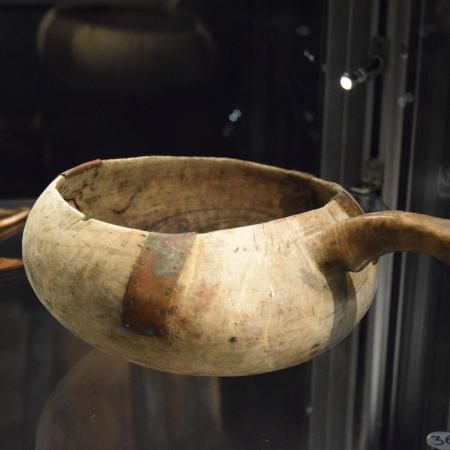
The Røros Sámi area extends from Meråker in the North to Engerdal in the South and Trollheimen in the West. Reindeer herding, Sámi language and handicrafts are key elements of Sámi culture. In 2017, the Røros museum inaugurated the exhibition “Voices from the South – Røros Sámi society and a new age” for the 100-year anniversary of the first Sámi Congress held in Trondheim in 1917.
For the Norwegian national movement, agriculture was the symbol of the nation, and Sámi culture did not fit into this picture. Scientific theories and powerful political forces resulted in new laws, which benefited farmers at the expense of Sámi rights. Sámi existence was seriously threatened and the nomadic way of life was gradually abandoned. This led to big changes in Sámi society.
In the southernmost part of Sápmi especially, reindeer grazing areas were severely restricted, and Sámi language and culture came under extreme pressure. The impact of the ‘Lapp laws’ and regulation of reindeer herding at the end of the 19th century meant that many Sámi wanted to strengthen their rights. Strong political engagement led to the first national congress of the Sámi population in Trondheim in 1917. The establishment of Sámi organisations at the beginning of the 20th century was seen as an important way of bringing about change.
Yet, the fight for Sámi rights is far from over. Everyday life for many Sámi is still affected by old laws and a majority of the society continues to see the world from a Norwegian perspective. At the same time, much has happened in the last 30 years which points into a more positive direction, and the Sámi population in Norway is now recognised as an Indigenous people.
40 exhibits were on loan from the Norsk Folkemuseum (https://norskfolkemuseum.no/en). The objects were collected in the period 1889-1950. Many of the objects tell of a nomadic way of life, which was undergoing dramatic change in 1917. The artifacts from the folk museum had never been shown in the area where they were collected, and the anniversary was a good opportunity to show them both for the Sámi people and other inhabitants of the region.
The exhibition was very well received by the general audience, and it was especially significant for Sámi, who could see the objects of their ancestors back in the place where they came from.
Website: https://rorosmuseet.no/en/voices-from-the-south-online

